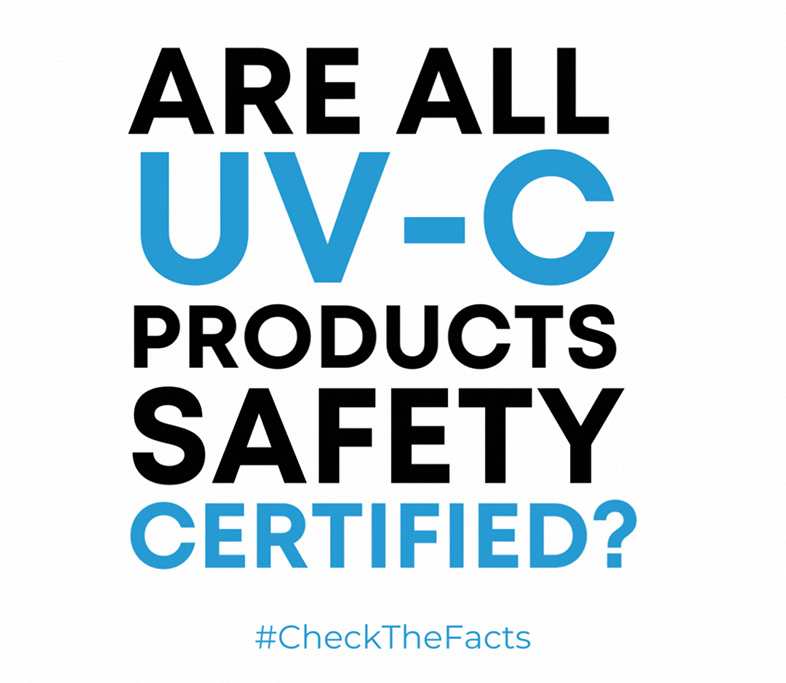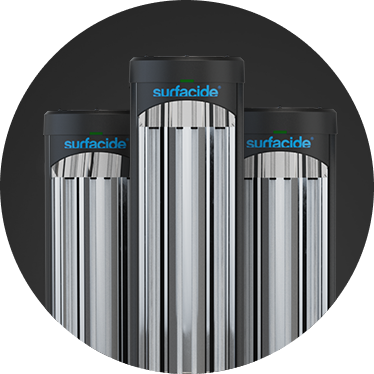Q&A with Quinn Leach, Surfacide Director of Quality and Compliance
As we continue on our journey to expose the myths around UV-C, it was important to dedicate a post discussing the safety requirements around the use of ultraviolet radiation. To correctly use and operate UV-C devices, it requires being properly educated, knowing the necessary precautions to take and using certified equipment. At Surfacide we say “not all UV is created equal,” this not only pertains to quality and effectiveness, but also ensures the UV-C technology being safely administered. We sat down with Quinn, our Director of Quality and Compliance, for a Q & A!
Q: When working with UV-C light, what safety precautions should be taken?
A: When administering UV-C microbial reduction, it should always take place in unoccupied areas, as it is unsafe for humans (or animals) to be exposed to UV-C light.
Surfacide’s system features interlocking motion sensors at all entry points which prevents UV-C lights from turning on if motion is detected, and the lights will immediately turn off if entry to the area is detected. Additionally, we post UV-C safety signage that clearly warns against entering an area being disinfected. UV-C radiation is a highly effective tool to kill bacteria and viruses, but it needs to be handled correctly, therefore it is imperative that safety procedures are created and implemented.
Q: How do built-in delay start timers safeguard the user from harmful exposure?
A: Some UV-C companies use a self timer feature. This prompts the user to start the microbial reduction cycle using a timer, typically around 30 seconds, before the microbial reduction cycle starts.
While this delayed start timer is easy to use, it has the potential to be unsafe for the user. Alone, a timer is not sufficient to prevent UV-C exposure. The safest UV-C devices on the market today incorporate multiple motion sensors that are activated prior to turning on the UV-C lights. This ensures that the UV-C lights cannot be turned on if motion is detected during the countdown sequence.
At Surfacide, we designed our UV-C technology with the end user’s safety in mind. In addition to the safety motion sensors we mentioned in the previous question, Surfacide technology also operates using the Surfacide App. Here’s how it works…
The Surfacide App incorporates a safety checklist that must be completed immediately prior to the operation of the system. Items on the checklist include:
- Verify there are no people in the microbial reduction area.
- Close all points of entry.
- Ensure a safety motion sensor is properly placed at all entry points.
- Place a caution sign or caution tape in entry ways.
- Confirm microbial reduction space is unoccupied.
Q: What certifications do Surfacide UV-C devices have so it is safe to use?
A: Unlike our competition, our devices are designed, manufactured and tested in the U.S. under an ISO 13485 certified Quality Management System. Click here to view our certificate. Our devices are tested and certified by an independent third party to meet applicable safety standards, and each device contains a label with the appropriate certification mark. In the U.S., common marks are UL and ETL; these are well-recognized symbols of product safety that can be independently verified online.
When purchasing UV-C equipment, inquire about the device’s safety certifications and marking. If the UV-C provider says that testing is performed in house, ask for a copy of the test reports to review with your Biomed team.
Q: Is Surfacide UV-C Technology eco-friendly?
A: Yes! Surfacide UV-C technology is a great way to disinfect while being non-toxic and chemical-free. It is designed to optimize UV-C output and consumes less power than many other single emitter systems on the market. Further, Surfacide recommends and will assist with recycling lamps after their useful life.
Q: What kind of training does Surfacide provide on this, if any?
A: To ensure both safety and proper use, all operators must be trained and certified by a Surfacide Implementation Specialist or designated Super User at their facility.






